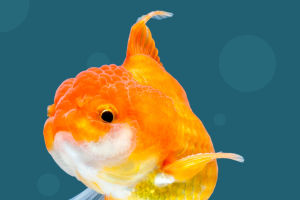Genie in Nature
Deer after hundreds of years of interpretation, eventually divided into 16 types.
The following 3 types are deer that have disappeared into the distant past.
Let's get to know them together.
Bighorn Deer
The giant bighorn deer is also called a bighorn deer.
It has a long face and a tall, stout body, with males reaching a body length of about 2.5 meters and a height of more than 2 meters.
They weigh up to 45 kg in their huge antlers, which have plum and main branches that extend into a flattened fan-like shape, radiating out in all directions with several curved and sharp branches.
The two antlers can reach a maximum distance of four meters at a distance.
Their head, neck and shoulders have very well-developed muscles that can support heavy roles.
Giant bighorn deer are found mainly in Europe and northern Asia, where they live mainly in open woodlands or on the shores of lakes where water and grasses flourish.
They are not grassland animals, although they have teeth suitable for grazing and are also herbivores.
Did bighorns go extinct because of their huge antlers?
In the past, the antlers of giant bighorns were thought to be too bulky, affecting their ability to move.
The annual replacement of their antlers was also a huge physical burden.
However, recent studies have shown that the skeletal structure of giant bighorns shows that they are capable of easily holding up their large antlers for life.
Thus the extinction of giant bighorns is not due to the size of their antlers, but rather to the size of their young at birth.
Therefore,female bighorns need more energy to breed and raise their young.
Bifurcated Elk
The Bifurcated Elk is a deer family that lived in the middle Pleistocene, with a length of about 2.3 meters and a height of about 1 meter at the shoulder.
Their fur color is very similar to modern deer.
But in fact, they are not the ancestor of modern deer, but only a branch of the deer evolution process.
It was named because its horns were double-inserted.
The tail of the bifurcated moose is longer than the average deer family, and can reach more than 4.cm, presumably to repel mosquitoes.
This animal prefers to be near swamps where there is abundant water and abundant plants to eat.
They act in groups, and the leader is usually a male, who is responsible for the feeding and living of the herd.
If there is a drought, the leader is also responsible for leading the herd to a place where water is available.
They are very home-loving, and if the drought passes, they have to return to their original place of living.
However, recent studies have shown that the skeletal structure of giant bighorns shows that they are capable of easily holding up their large antlers for life. Thus the extinction of giant bighorns is not due to the size of their antlers, but rather to the size of their young at birth. Therefore,female bighorns need more energy to breed and raise their young.
If they are tracked by enemies, the bifurcated elk have a life-saving solution, which is to integrate into other large herds of phytophagous animals, such as elephant herds.
The antlered deer prefers to live in small groups in mountainous areas.
It survived in the Miocene of North America.
It eventually became extinct at an early date.
Due to the mountainous environment in which it lived, few fossils have been preserved, mainly some skulls.
They are not too closely related to the modern deer family.
Its face was narrower and longer, which helped to detect enemies.
They had a higher crown of teeth that could grind harder plants, indicating that they were true herbivores.
The forelimbs, however, retain four toes instead of two.
Males also have large canine teeth, all of which are relatively primitive features.
The nose has long, two-pronged horns.
Because the bony nasal horns contain nerves and blood vessels, they are fragile and easily broken, unlike the solid bull and sheep horns, deer horns and rhinoceros horns which are so strong.
Their antlers are hardly used as weapons of defense against enemies, but are more likely to be tools of courtship and bragging rights among their own kind.
It is a great pity.
All three species of deer above did not evolve in the end due to their own and human reasons.


